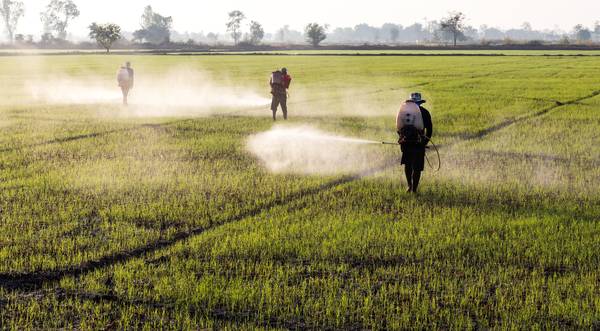Chinese glyphosate
technical market was slack in April 2018; overseas markets entered the slack
season. In the meantime, raw material prices kept rising. In this context,
glyphosate technical producers suffered mounting pressure.

Although
raw material prices kept rising and downstream demand remained weak, producers
did not obviously reduce operating rate, with some even increased. Based on
input-output ratio, glyphosate technical producers still have considerable
profits. Currently, 13 glyphosate technical enterprises are in smooth
operation, 4 in Central China, 1 in North China, 4 in Jiangsu Province, 1 in
Zhejiang Province, and 3 in Southwest China. Operating rate in Central China
remains at 66%, East China reached 62%, and Southwest China reached 71%. In East
China, operating rate gradually rises, from 57% to 62% in late March, leading
to improving market supply.
In
Q2 2018, the chemical market entered the slack season, with glycine prices
showed up-regulation. However, glycine operating rate was dropping although
orders were abundant.
Rising
glycine price will undoubtedly pose pressure on producers without their own
glycine production equipment. For those who can produce glycine by themselves,
that would be an opportunity. For example, Inner Mongolia Tenglong and Sichuan
Fuhua Tongda with supporting glycine equipment, can save production cost and
earn more profits from the high market price of glyphosate.
In
2017, many glyphosate producers continued production suspension due to
environmental inspections. What's more, global planting areas of GM crops kept
rising and overseas pesticide manufacturers were supplementing inventories. As
a result, the over-capacity situation to some extent got relieved, and the
industry was better than 2016. Environmental inspections also tightened the
supply of main raw materials such as iminodiacetonitrile and yellow
phosphorus, leading to price hikes. On the whole, market prices of glyphosate
showed a YoY rise.
As
for the future trend of the glyphosate industry, Sichuan Hebang holds the view
that after three-year adjustments, plus the stringent environmental inspection,
there are not many glyphosate producers with smooth production. At the same
time, strict requirements for newly-built capacity means limited new capacity and
difficulty in production resumption of small producers in the future. It is
predicted that the supply-demand relation will further improve in 2018. For
PMIDA, as its prices, supply and demand are closely related to glyphosate, the
product will also show an uptrend.
Notably,
the central environmental inspection team once launched a one-month inspection
in Sichuan Province.
About the article
The
information for this article comes from CCM, China’s leading market
intelligence provider for the fields of agriculture, chemicals, food and feed.
Get
regular and exclusive insights into China’s glyphosate market by
subscribing to CCM’s monthly published glyphosate report.
Take
part in the discussion by joining our groups on LinkedIn and Facebook.
Follow
CCM on Twitter: @CCM_Kcomber